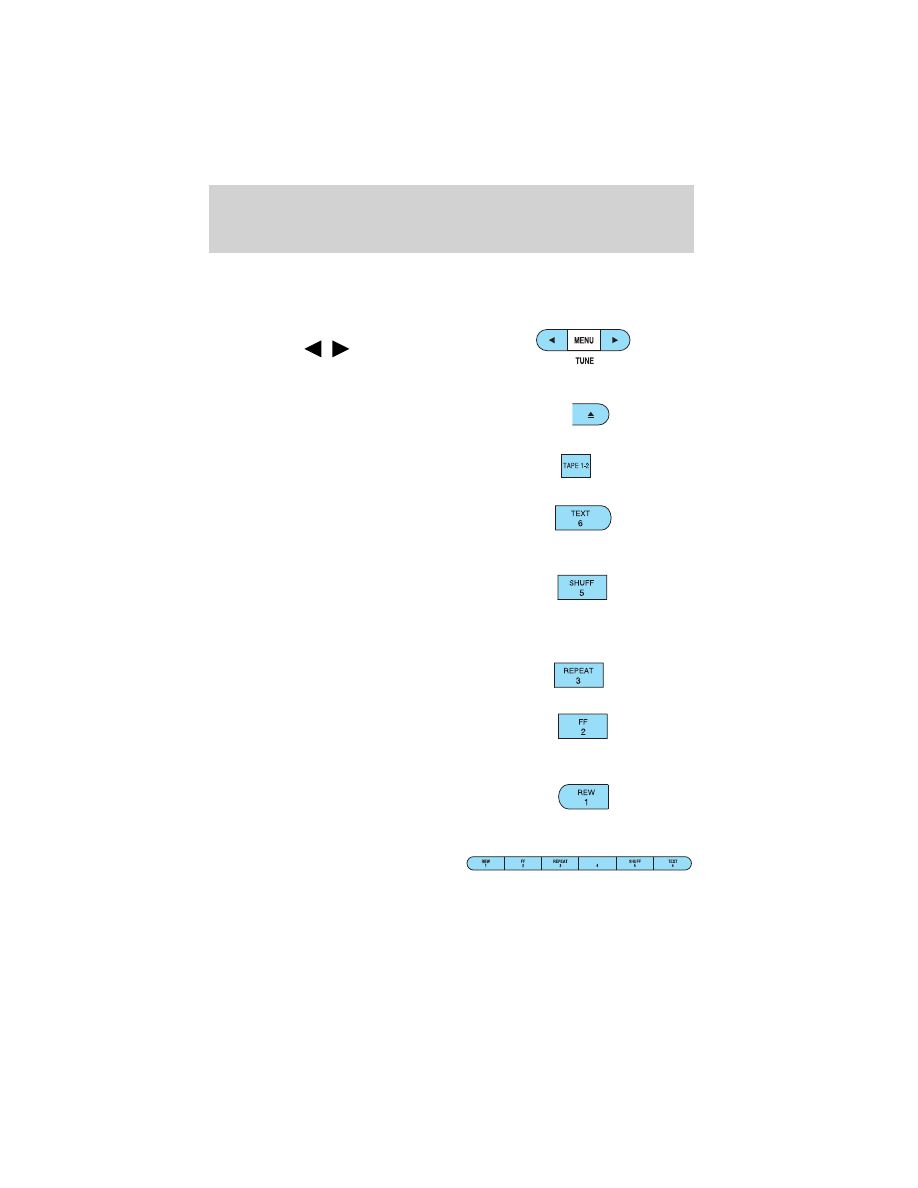Mazda B4000 4WD Truck (2004 year). Instruction - part 2

reduction system is manufactured under license from Dolby Laboratories
Licensing Corporation. Dolby
t and the double-D symbol are registered
trademarks of Dolby
t Laboratories Licensing Corporation.
5. TUNE: Press to manually go
down/up (
/
) the radio
frequency and also to select
various settings in menu mode.
6. Tape eject: Press to eject the
tape.
7. Tape 1–2: Press to change
playing sides of the tape.
8. TEXT: In MP3 mode, press to
view the next 12 characters in
the MP3 Music name/file name
of the current MP3 track and directory.
9. SHUFF (Shuffle): In CD or
MP3 mode, press to play the
tracks on the current CD/MP3
in random order. In MP3 directory mode, press to play the tracks
within the current directory in random order.
10. REPEAT: Press to repeat the
current CD/MP3 track.
11. FF (Fast forward): In tape
mode, press to fast forward the
tape. In CD mode, press to
manually advance in a CD track.
12. REW (Rewind): In tape mode,
press to rewind the tape. In CD
mode, press to manually reverse
in a CD track.
13. Memory presets: To set a
station: Select frequency band
AM/FM; tune to a station, press
and hold a preset button until sound returns. To select a preset
station, press the desired memory preset button.
Entertainment Systems
24